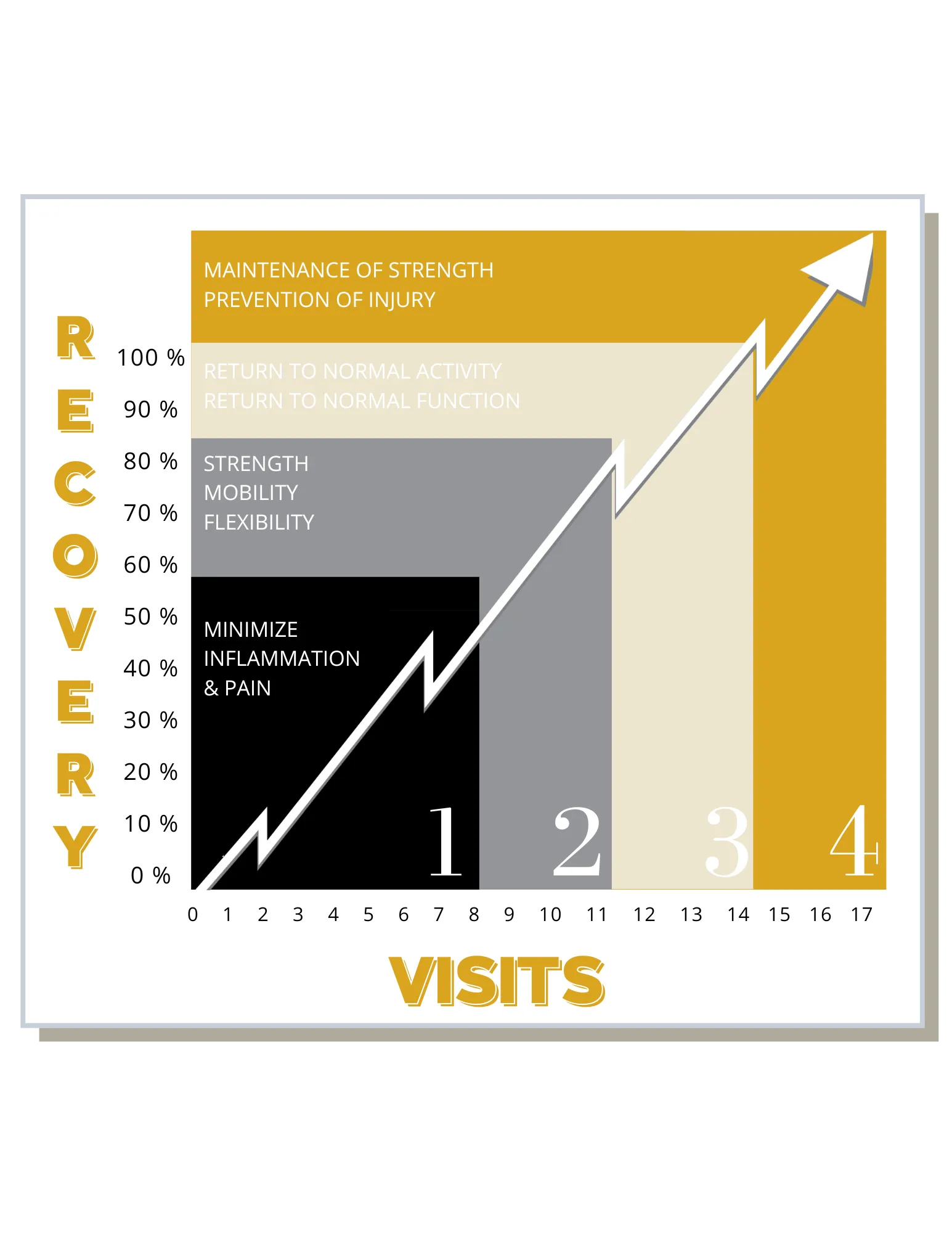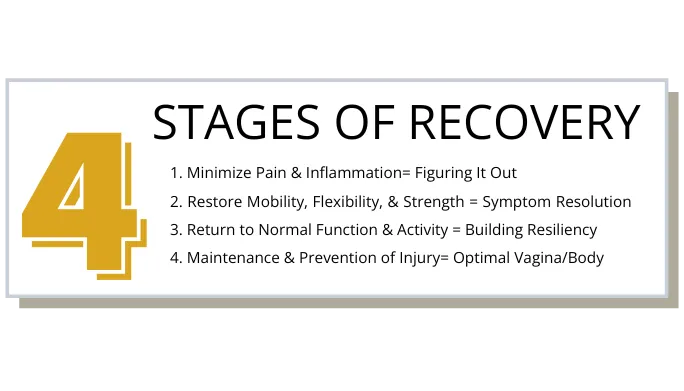Written By Dr. Sarah Salas, PT, DPT
“How long will it take until I am better?” This is one of the most common, and also loaded, questions we get asked by patients when we first meet. It’s a great question to ask- everyone wants to know what they are signing up for; how long the journey may take and what it entails; and of course, when they will start feeling back to normal. We are well versed in concepts like tissue healing timelines, what benchmarks a patient with an ACL repair needs to reach before returning to the sport, and various other guidelines and approximations of when one should reach the finish line. However, pelvic floor physical therapy is different.

The national average for a patient to complete pelvic floor physical therapy is 12 visits. This number can fluctuate based on a variety of factors: the acuity or chronicity of symptoms, emotional/behavioral patterns, lifestyle choices, presence of orthopedic dysfunction, frequency of seeing your therapist, patient’s adherence to their home program, and many other aspects. This makes the “12 visits” a ballpark estimate. A wise mentor of mine once said, “Our patients do not read the physical therapy textbooks.” What he meant by that is this: we are all unique individuals and we do not fit into a single set of rules in how we respond to therapy. The needs and plan of care for two individuals with the same set of symptoms can be completely different!
Back to the original question- “How long will it take ME to get better with pelvic floor PT?” In complete and utter honesty, on your first visit, we truly do not have a concrete answer. With that said, we usually have an idea based on synthesizing data from prior patients with similar presentations, knowing the current research, and utilizing the best evidence-based guidelines and protocols; but once again this is a ballpark estimate. We focus on four phases of treatment and each of these phases can vary from person to person.

When we first meet, there is a lot of data about the body to be gathered. We examine and assess orthopedic elements such as how the joints of your spine, hips, and sacrum move; neuromuscular control such as muscle strength, activation, and motor patterning with different movements; the coordination of muscles in a system; visceral mobility; myofascial mobility; breathing patterns; AND the pelvic floor. Pelvic floor dysfunction is rarely caused by a singular factor and rarely exists alone. Because of this, we MUST look at the pelvic floor as a piece of a whole system. We typically call this “Phase 1” of treatment- figuring out the root causes of your symptoms and working on decreasing inflammation and minimizing them.
Seems like a lot to take in, right? It is! We gather a lot of data points for evaluation, then we have to fit those pieces of the puzzle together. Once we have most of the data (typically discovered between 1-4 sessions) we are able to make headway in decreasing and eliminating symptoms through ”Phase 2” of treatment. We work on improving mobility, coordination and control, and strength. This happens over time- think about how hard it is to break a habit, AND build new ones!
As we progress towards “Phase 3” our goal is to return you to the activities you love by introducing functional and sport-specific exercises in a controlled manner and environment. For example, a runner coming back from injury does not jump straight back into running- we work on strength and stability first, then add in running-specific drills, and then progress back into running with a walk/jog program.
We are always collecting more data and fitting the pieces together to create a comprehensive, holistic, and whole-body plan of care. You also have to throw in the new information that comes up as you and your PT begin to build a trusting relationship. It can be anything from that fall on your tailbone from when you were 10 years old (that you had forgotten about), or a new life stressor that’s been on your mind 24/7- it all matters in pelvic floor therapy. We must consider the presentation of your symptoms, the day-to-day contextual factors of your life, and the good ol’ concepts of tissue healing times, and how long it takes to elicit change in the body. Sometimes the path to wellness is not always linear- bumps in the road are expected and inevitable, and we are here to support you through them!
With all of that said, our mission here at Reborn is that your pelvic floor physical therapy journey is transformative- body AND being. Our goal is for you to reach the stage of wellness and prevention of future injury that we call “Phase 4: The Optimal Vagina/Body”. We are going to do whatever we can to get you back to the things you love to do! In our eyes, that means taking as much time as each unique individual needs to make sure you are feeling better, have the tools you need to continue to make positive change, and have prevented future injury and dysfunction from occurring.
While crossing the finish line and reaching your final destination is a wonderful feeling and our ultimate goal; we want to make sure every step of the way is taken with care, compassion, and helping you find the confidence to conquer whatever you set your mind to!


